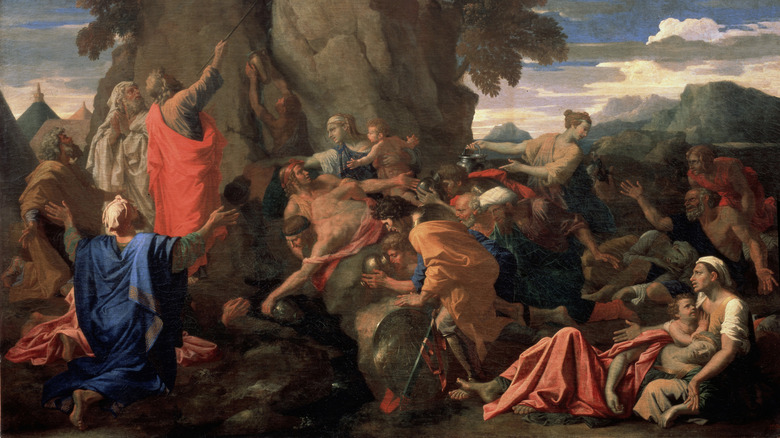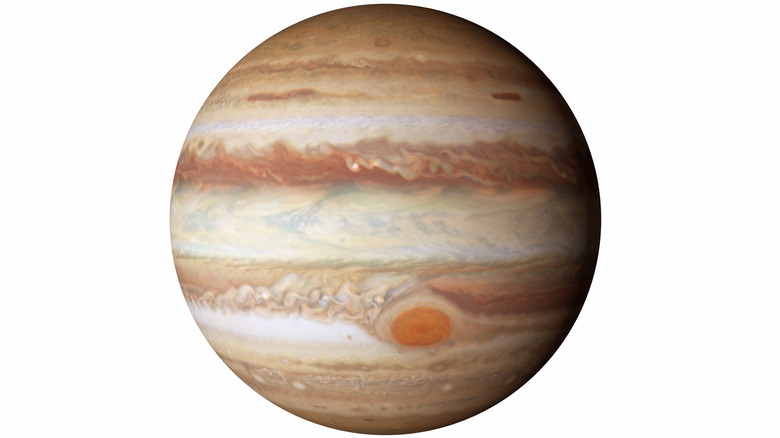
What Is Manna?
Many of the words and phrases we use colloquially in English have their origins in sacred texts. For example, we may refer to a destination as a “Mecca,” referring to the ancient Arabian city, mentioned twice in the Qur’an, and which today serves a pilgrimage site for hundreds of millions of Muslims. Similarly, we talk about someone’s “karma,” mentioning an ancient Hindu concept written about in that religion’s sacred scriptures.
A number of turns of phrase in English find their roots in religious texts, specifically the Bible‘s Old and New Testaments. For example, there’s the Adam’s apple, which refers to the seam in the neck cartilage that is prominent in males. Healthline relates that the folk tale attributes the bump to the bite of forbidden fruit Adam consumed in the Garden of Eden; a bit of it stuck in his throat. A “good Samaritan” hearkens back to one of Jesus’ parables, referencing a person who does a good deed.
Another such phrase from the Bible is “manna from Heaven,” referring to an unexpected gift that comes at just the right time. This is the story of manna’s place in the narrative of the Bible, and what the word originally meant.
Manna was the Old Testament version of emergency food rations
Manna first appears in the Old Testament, in Exodus 16. To set the scene: Moses had led the Israelites out of slavery in Egypt, only to see his people lost in the desert and facing starvation. In response, God sent emergency food rations: quail and manna.
In essence, manna was sent as a sort of miracle food (in the most literal possible sense) that at once served all of the consumer’s nutritional needs. In the Exodus 16 narrative, manna is described variously as a flaky substance that appeared on the ground in the morning, not unlike frost. Elsewhere it’s described as something akin to a sort of resin, which would then be pounded into cakes and baked, resulting in a sort of oily bread, according to Numbers 11.
At first, the Israelites weren’t sure what to make of it. “The Israelites were puzzled when they saw it. ‘What is it?’ they asked each other. They had no idea what it was,” according to Exodus 16:15. “What is it?” is an apt descriptor of the substance, as, according to Hebrewversity, the word transliterated into English as “manna” literally means “what is it” in the original Hebrew.
So, seriously, what is it?
If the ancient Israelites didn’t know what manna is, modern scientists and Biblical scholars are no closer to knowing what it was, either.
It might have been a resin that is secreted by various plants and shrubs native to the Middle East, such as that of the tamarisk tree, which is at once high in sugar and similar to wax, roughly in keeping with some descriptions of the substance in the Bible, according to the Washington Post. Another theory, from Atlas Obscura, suggests insect secretions that solidify into globules and have been used both as food and medicine. Or, according to Australia National Herbarium, it could possibly have been a lichen known as Lecanora esculenta which, in some parts of Asia, can grow several inches thick.
Lytton John Musselman, a botany professor who has written a book on biblical plants, isn’t buying the lichen theory: “The taste and flavors are enough to gag a maggot,” he said. He also noted that there’s an inherent difficulty in attaching scientific validity to a Biblical account of a miracle. “It’s very difficult to research things that fall from heaven,” he said.

The Four Women Who Have Been Executed By The Federal Government

The Truth About The Legendary City Of Xanadu

The White Death: The Truth About The Greatest Sniper You've Never Heard Of

Son Of Sam: What David Berkowitz's Life In Prison Is Really Like

Who Exactly Started The Stonewall Riots

The Mystery Of Sydney West's Disappearance

This Is How Much Paul Rodgers Is Actually Worth

The British Royal Title That Can Never Be Used Again

The Difference Between State And Ceremonial Royal Funerals

Hidden Secrets Of The Library Of Congress

























